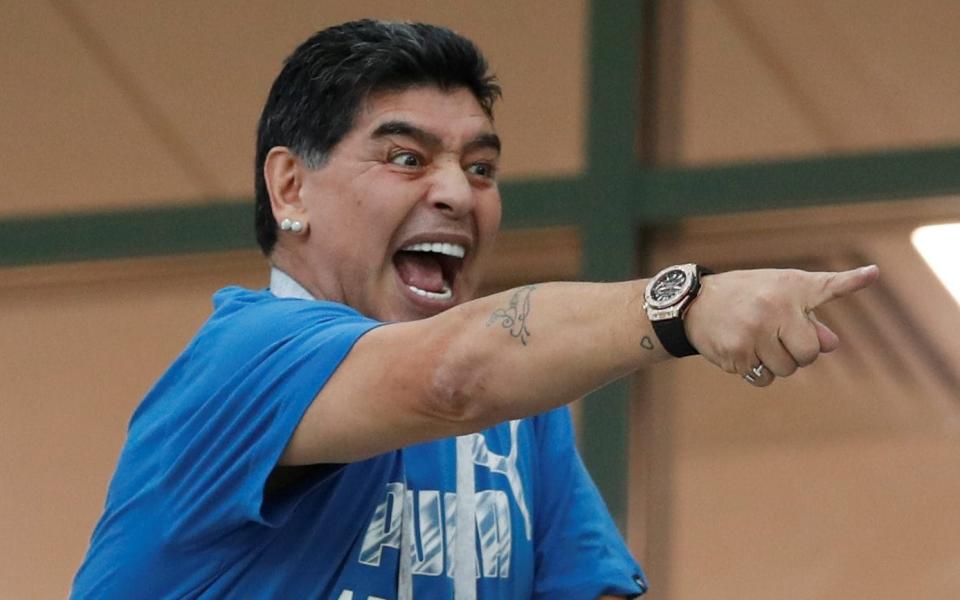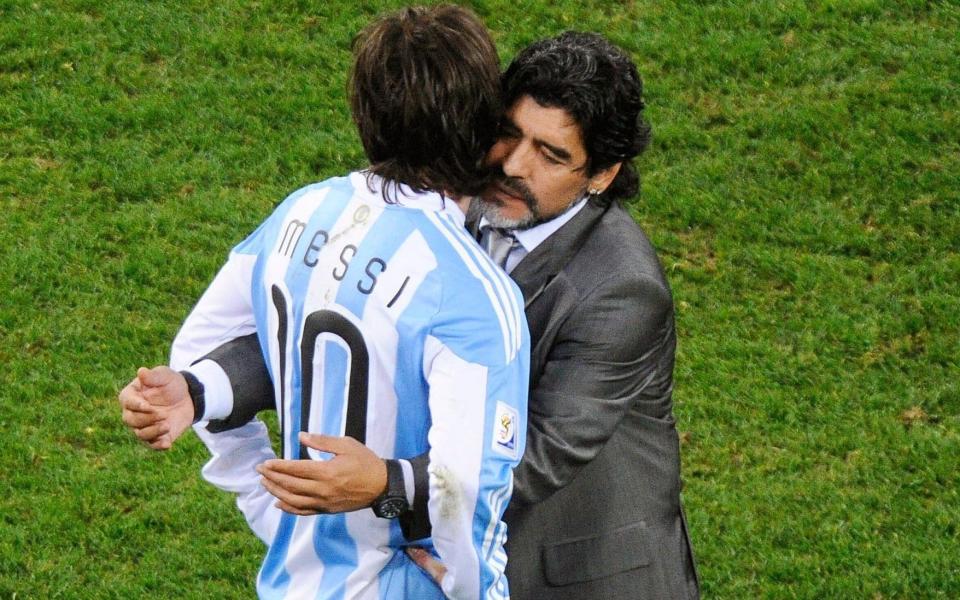How Diego Maradona's life spiralled to leave him a hobbling, arthritic shadow of his former self

The final moments of Asif Kapadia’s magnificent film Diego Maradona are almost too painful to watch. To a soundtrack of an interview conducted when he was at the peak of his powers in Napoli, when he talks of the football pitch being a refuge, a sanctuary, a place of freedom where he could express himself without fear, we see Maradona in his late fifties attempting to play five-a-side with his friends.
The juxtaposition of the glorious athlete of our collective memory and the hobbling, pot-bellied, arthritic shadow he became is a telling reflection of his decline. So precipitous was his fall, it almost appeared to be the consequence of a Faustian pact, an agreement to become the most influential footballer in the world in exchange for a sporting afterlife of misery and self-loathing. The sadness is that any evaluation of his genius cannot but take account of what happened next.
It had been long coming, but we were given first indication of his unravelling at the 1994 World Cup. The man who had dragged his country to victory in 1986, then almost repeated the trick in 1990, was by now a drug-addled parody of his glory days. His goggle-eyed celebration when he scored his last ever goal for his country in the game against Greece was a symptom of his personal nightmare: the man was wired beyond repair. Banned, traduced and shamed, his playing career was over.
But back in his homeland he was still revered. And no wonder, given what he had delivered. He parlayed his celebrity into a lucrative turn as a chat show host, before his inability to control his appetites compromised his facility to frame a question. Still, he knew about football, so in 2005 he was offered a role as sporting director at Boca Juniors, his old club in Buenos Aires’s most roughhouse neighbourhood. In a stadium that, 25 years after he last kicked a ball there, remains a shrine to his brilliance, his very presence was an inspiration; Boca won four trophies in two seasons with him watching enthusiastically from his private box. In a manner that was to become a pattern, though, it did not last. He fell out with the club president and was gone.

A passionate cheerleader for the national side, he had spent the 2006 World Cup in Germany in the stands swishing a replica blue and white Argentina shirt above his head. Sensing his devotion, two years later, the Argentinian FA sought a touch of his magic. He was made coach of the national side, in the hope he could lead them from the bench as he had from the pitch.
Inevitably, it was a bumpy ride. After a series of defeats in the qualification campaign, Argentina needed to win their last two matches to make it to the 2010 World Cup. When they did, at his after-match press conference, Maradona celebrated with an expletive-laden rant against his detractors. So extreme was his language, he was given a four-month ban by Fifa. Nevertheless he was retained by the AFA to take the side to South Africa. Although not for long. After a 4-0 hammering by Germany in the quarter-final, he was fired.
So began a tour of ever more obscure coaching jobs. Here was a true great taking charge of Al Wasi in Dubai, Fujairah in the UAE second division, and the Mexican second-tier side Dorados. No club of any serious repute, it seemed, would go near him. In the meantime, his addictions were taking their toll. His weight ballooned, his knees buckled, his liver malfunctioned. Twice he was close to death, eventually recovering in rehab in Cuba. He claimed he had forsworn alcohol and drugs: that he would be clean and sober. But his appearance in a hospitality box during the World Cup in Russia in 2018 suggested otherwise. Blank-eyed, disoriented and sniffing repeatedly, he was filmed abusing some Nigeria fans after Argentina had won a group game. It was not a good look.

Sadly, nor was it untypical. The man who routinely referred to himself in the third person as El Diego had once fired an air rifle at reporters gathered outside his home, had left Italy with an outstanding tax bill that grew with interest to more than €35 million (£31million) and had for 25 years refused to acknowledge his responsibility for the son he had back in Naples.
All of it, the substance abuse, the violence, the loss of verbal control, came from the same root: his desperate search for meaning and purpose after his playing career had come to an end. There he was, unquestionably the greatest player of his and many a generation, now drifting, pointless, constantly reminded of a past he could never match.
Latterly, there had been signs of a personal reconciliation. He had met up with his son, had mellowed and was still holding down a job in management with Gimnasia (despite being fired early into his tenure, only to be rehired the next day). Tragically, the toll excess had already taken on his body meant he was unable to enjoy any fruits of his change of attitude.
Now he is gone we have opportunity to enjoy what he was rather than what he became. Just to watch that footage of him warming up on the pitch ahead of a Napoli game back in 1986, his hips bouncing to Euro disco playing over the stadium tannoy, is to see a genius at work. One, moreover, who looked genuinely happy as he prepared to express himself without hint of the fear that came to haunt him.

